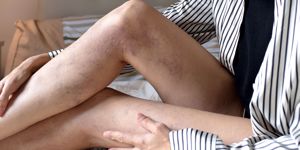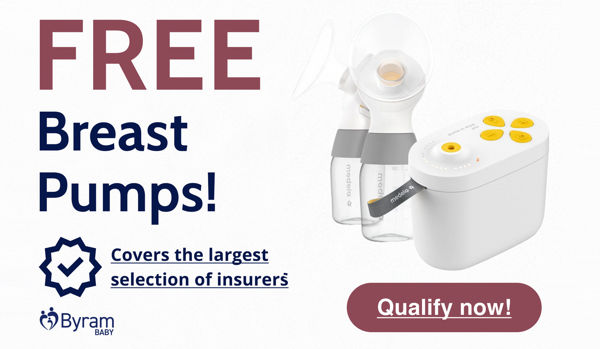We have extraordinary and incomparable physical experiences during pregnancy. The first flutters in your belly, the forceful kicks after you eat spicy foods, or the shifting of limbs made noticeable by your belly shape morphing from a round ball to a lopsided torpedo, are just a few of them. Although discomfort and pain are inevitable during labor and delivery, there are certain discomforts throughout pregnancy you need to pay attention to because they could be warning signs of something more severe going on.
For example: when your legs begin to resemble a road map, you need to stop and pay attention.
During pregnancy, the uterus puts considerable pressure on the large vein in the pelvis, called the inferior vena cava vein, making the blood flow to your legs significantly worse. It begins during the second trimester and can worsen during the third, when your uterus is at its largest, putting the greatest pressure on your veins.
We know our blood volume increases by 50 percent during pregnancy. Well, imagine a train station. Everyone has to go through those entry doors that slide outward, allowing one person at a time to the platform. On a normal, busy afternoon, the station can still function without conflict or too much traffic backup, getting each person safely to the platform without causing a delay. One fine day, however, this station gets a lot more people. Like, 50 percent more people. And all those people need to get through those sliding, ticket-scanning doors to get to the platform, meaning there will be heavier traffic, slower-moving people, and some individuals at a complete stop waiting for others to get out of the way. And to make it worse, people on the platform, who have just arrived, have to exit through those same sliding doors to leave the station. People are coming in both directions!
Do you understand my visual metaphor? The platforms are your legs. The sliding doors are the valves in your veins. The people are the blood. This station just got a lot more chaotic, and we need to help it!
Help your legs, ladies!
How do we prevent varicose veins? Unfortunately, some of us have a genetic predisposition. If your mother had varicose veins, you are likely to get them. Many women get them during pregnancy, and then after delivery, the varicose veins slowly fade away. But there are preventative measures we can take to make us feel much more comfortable, ease appearances, and assist the healthy blood flow.
According to www.veinreliever.com, we can prevent varicose veins by doing the following:
- Avoid prolonged standing and sitting
- Sleep on your left side to take the strain off the inferior vena cava vein
- Keep your legs elevated
- Maintain a healthy diet and exercise routine to improve your blood circulation
- Avoid wearing high heels (if possible, wear flats instead)
- Stay off your feet for long periods when possible: take more frequent breaks at work or while doing housework
- Wear compression stockings to help move blood out of the legs and back to the heart
Mayo Clinic educates us on a couple more reasons why we get varicose veins, saying, “Aging causes wear and tear on the valves in the veins that help control blood flow. Eventually, that wear causes the valves to allow some blood to flow back into the veins, where it collects.” Consequently, if you’re ages 35 and older, you’re considered a geriatric pregnancy and thus more prone to varicose veins. Wonderful.
Mayo Clinic also says another contributing risk factor is “obesity. Being overweight puts added pressure on veins.”
I’m sorry, ladies. The excuse “I’m eating for two!” doesn’t exist anymore. Even though we need to consume more calories, it doesn’t necessarily mean we can be oinkers and indulge in all the warmed, dark chocolate croissants we want. If you are trying to get pregnant, attempt to maintain a healthy weight and diet and continue with your pregnancy-approved exercises and healthy foods throughout your pregnancy. Iron-rich foods like beans, lentils, leafy green vegetables, and spinach all aid your body in making more blood for the baby and having healthier blood flow.
When I was pregnant, I didn’t have the luxury of taking breaks to put my feet up because I had other small children. So, I found that wearing compression socks helped immensely with the discomfort and heaviness I felt in my legs. And I continued to wear them after pregnancy to help decrease the swelling. And if you’re special, like me, and need or want extra treatment to heal the veins in your legs, there are wonderful vein treatment centers with noninvasive treatments to support your blood flow and the appearance of varicose veins.
When should I be alarmed? How do I know if a vein looks abnormal? What if I have a lot of pain in my legs? If your veins are painful to the touch, you see blood spots appear on the surface of your skin, or you experience throbbing pain or heat, call your doctor immediately. Do not self-treat. Do not ignore it.
Say it with me: Call the doctor.
Do what you can, and get help when you can’t. You’re not the only one looking like you received all of the United States' craziest highway intersections tattooed on your legs. And did you know you can hear the blood flow? You have to listen VARICOSELY….. heh heh.







